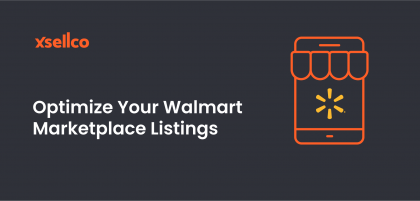The holiday season can be a very stressful time if you’re a seller. Whether you have an online store or a physical shop, or both, a returns policy is inevitable.
On November 27th Black Friday will be upon us. The reasoning behind the word ‘Black’ in this instance, was to suggest that it’s the first time store owners would turn a profit for the year. It will only get busier then for sellers with Small Business Saturday, Cyber Monday, Green Monday, Free Shipping Day and Super Saturday leading you up to Christmas.
As a seller you may now be thinking, how important is a returns policy? how should my returns policy look? How much will returns cut into my bottom line? What do customers want out of a returns policy? Read below to find the answers to all these questions and how you can actually use your returns policy to increase sales.
It’s the main reason people won’t buy from you
Not having a visible returns policy is the biggest put off for potential customers. In a recent survey from comScore 82% of respondents said they would complete a purchase if they could return the goods to a store or have free return shipping. This was more important to customers than initial free shipping, shipping dates or mobile experience.
Also with ecommerce sales rapidly growing, bricks & mortar stores are looking to successfully translate their success in the online world. However, in-store shoppers said that the No.1 reason why they wouldn’t buy online was because of the returns process. Despite this, 89% of customers said they would shop again if they had a positive experience with returns.
So how do you manage to fill online shoppers with the belief that they can return something hassle free if they wish…
You’re talking to human beings
As important as they are to customers, nobody wants to read a returns policy. Lines and lines of black text with decimal points and references to acts you’ve never even heard will put off your customers.
Use clear and simple language, or even better, take the example of Zappos who use a video on how to complete a return.
Customers haven’t got a lot of time to spare as well and don’t want to go fishing around looking for your policy. So make it viewable on all product pages, in the checkout and any confirmation emails you send out after the purchase.
“Returns keep cutting into my bottom line”
The mindset to have with returns is they are going to happen. It doesn’t make you a bad business person and you should always factor their inevitability when working out your gross profit.
It’s vitally important not to react or panic when you receive them as this could lead to negative feedback on social media or review sites like Trustpilot. This could then have a severe effect on your reputation as a seller.
Returns increase sales
So instead of taking it personally, be proactive with your returns and turn it into a positive. You should already have a returns slip in your package, but does it ask the customer to explain the issue with the product? Give them a few options such as faulty, poor fit, wrong item, not needed. That way if a trend is forming you can put a stop to it.
If you have a multichannel store, allow customers to return the goods in store. That way they might buy something else while they are there.
As mentioned before, if your returns process is smooth, people will come back. So let them know when you’ve received the goods and when they’ll expect a refund. Serial Entrepreneur Grant Cardone couldn’t put it better…
“Your return policy isn’t there to make unhappy customers happy. It’s there to increase sales. Your return policy should result in an increase in sales greater than the cost of returns, restocking, and other costs.”
What customers want
As important as it is to offer in-store returns, it’s more important to offer free online returns. This has become the given in ecommerce sales now and not doing so could be the difference between a sale for your competitor over you.
Customers also want to see reviews and plenty of them! What other people think is of importance to potential buyers. Reviews will significantly reduce your returns as the detail will help customers make the right choice.
In regards to detail, display a tab on your product page that shows more in-depth specifications. This way it doesn’t deteriorate from the page itself.
Can you display a video of your product? A great example of this is ASOS who display a model wearing an item of clothing on each product page.
Keep your inventory right
As multichannel selling is becoming the only option for retailers to increase sales, it can become difficult to manage your inventory across all of your channels. As well as your physical store you may also sell on your website, plus marketplaces like eBay and Amazon.
As customers start returning goods it can be difficult to know what’s coming back, what goods are going out and how to then display your stock across all your channels. Therefore an inventory management software solution can help you manage your stock and keep your customers happy during the busy holiday period.
In summary about Returns Policy
- Display your returns policy on the checkout, product pages and all emails
- Ask them why they want to return the item
- Offer free returns
- Give them option to return in-store, to help increase sales
- Use customers reviews & video to reduce return rate
- Manage your inventory across all your channels








